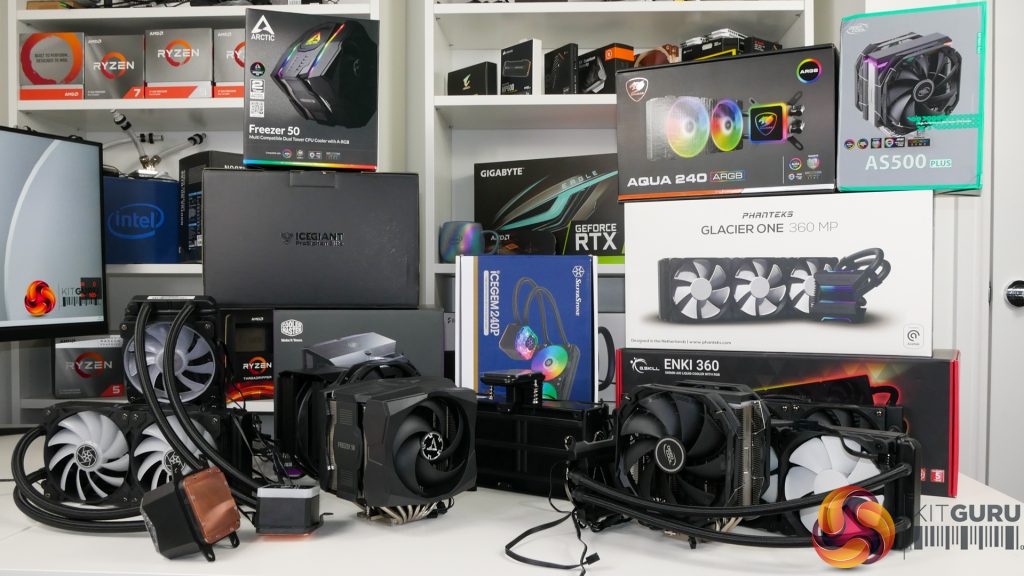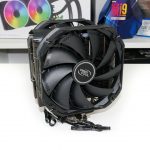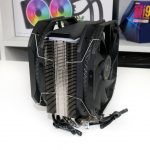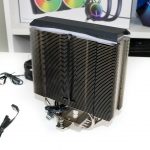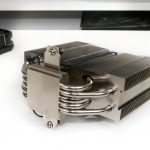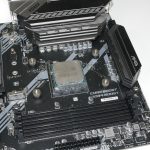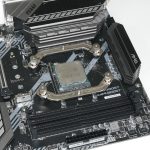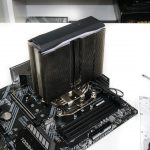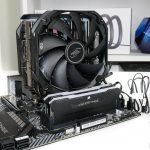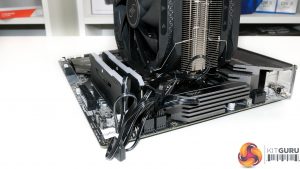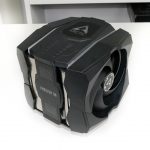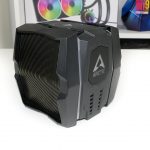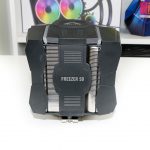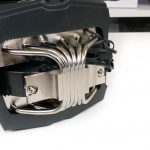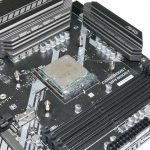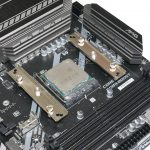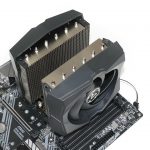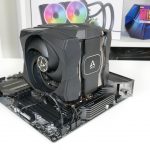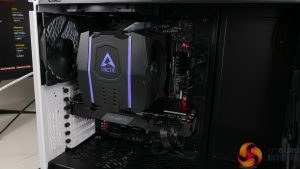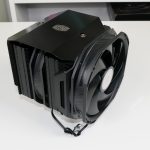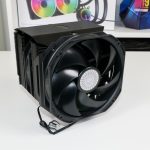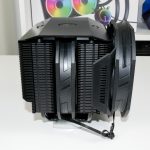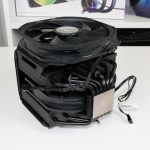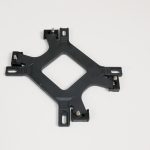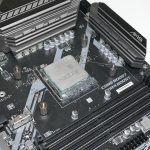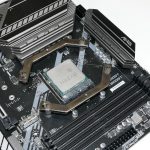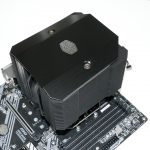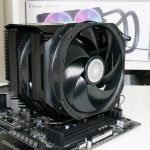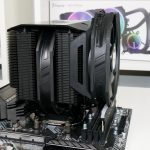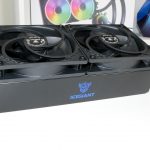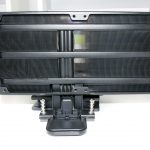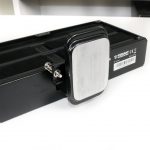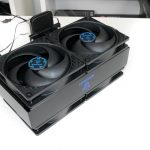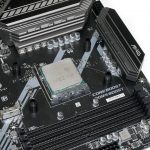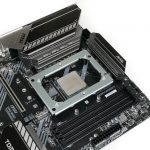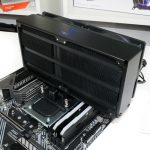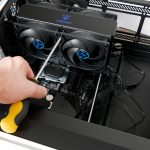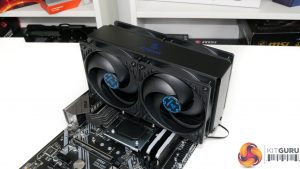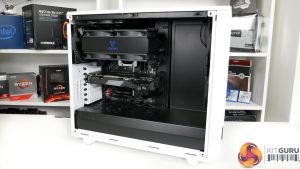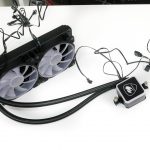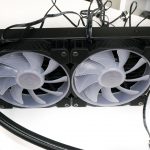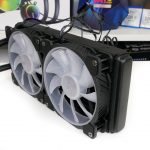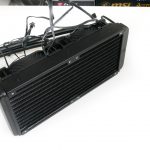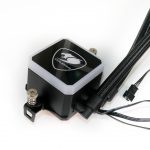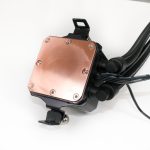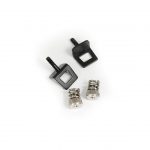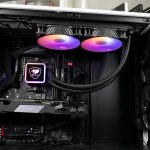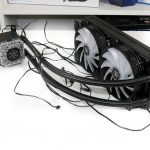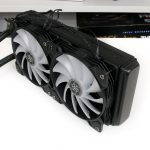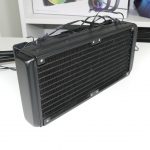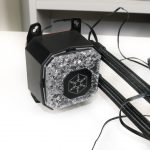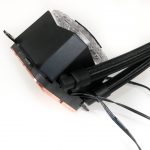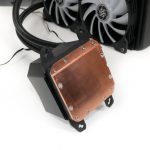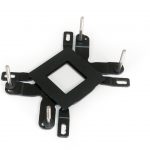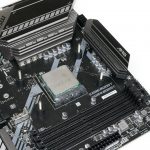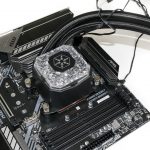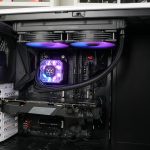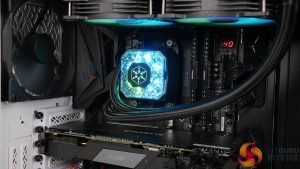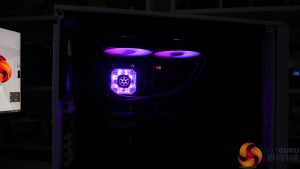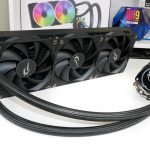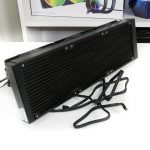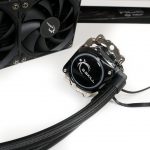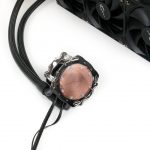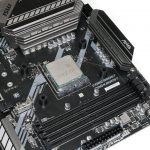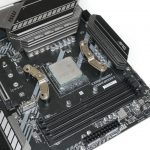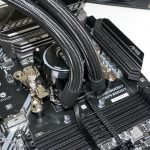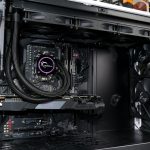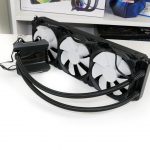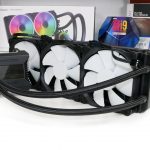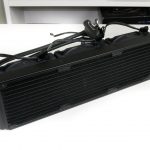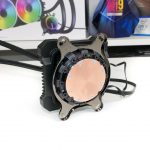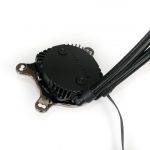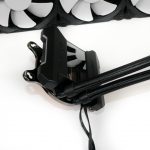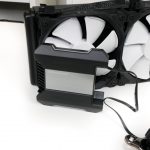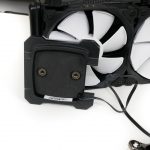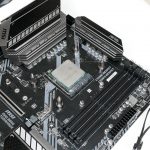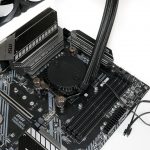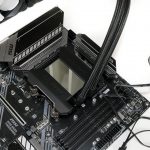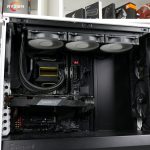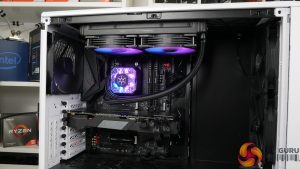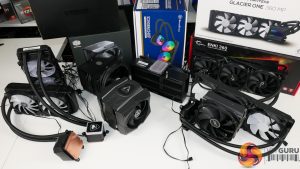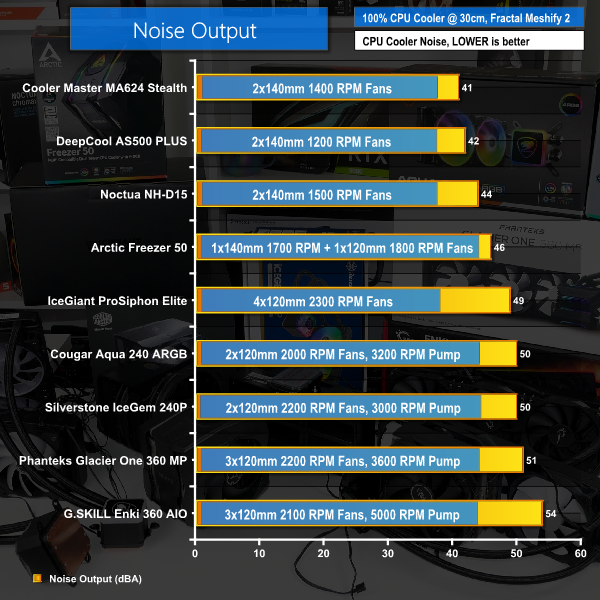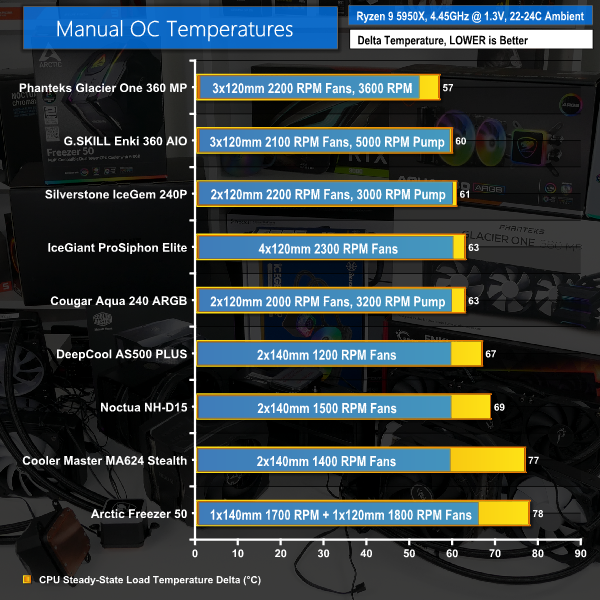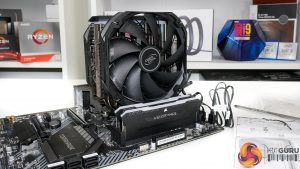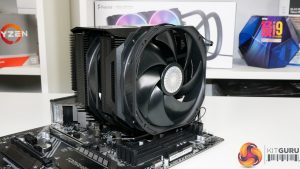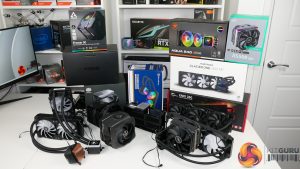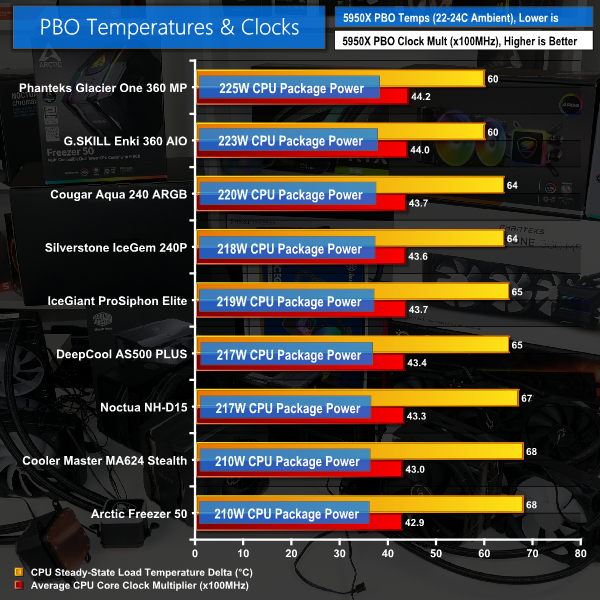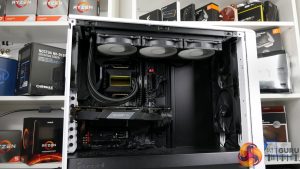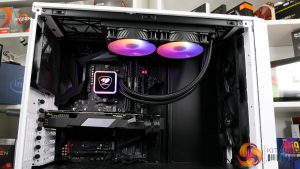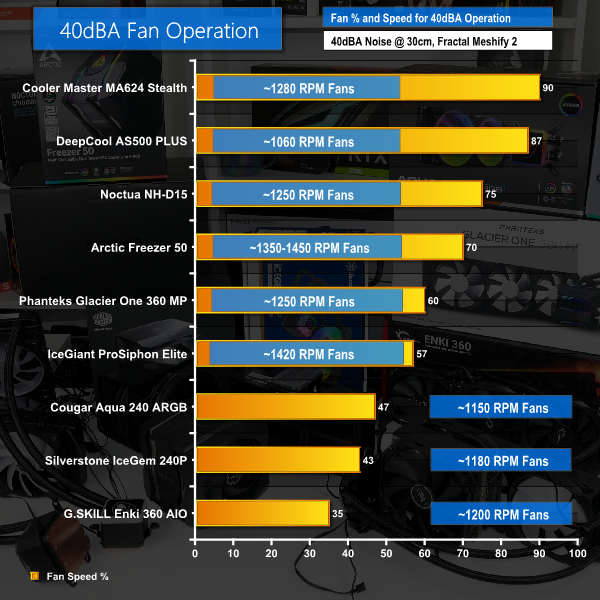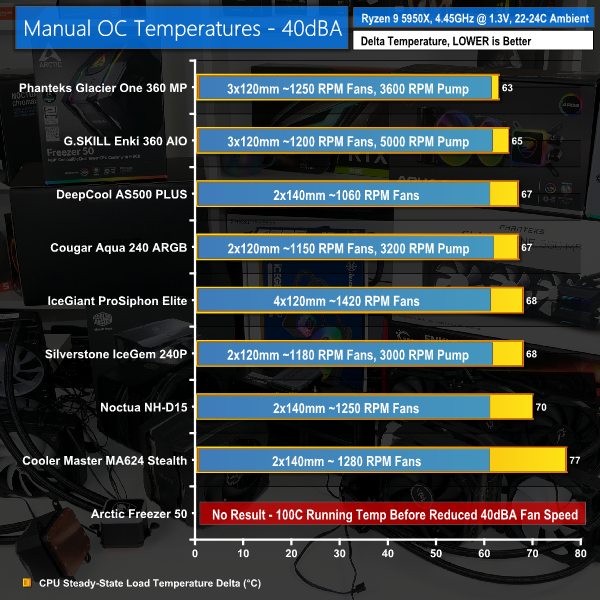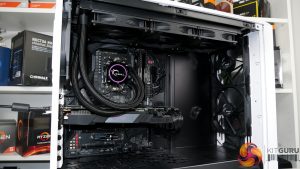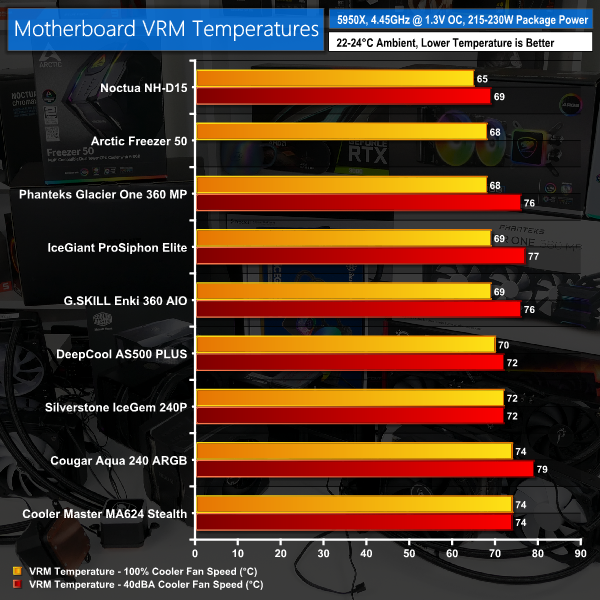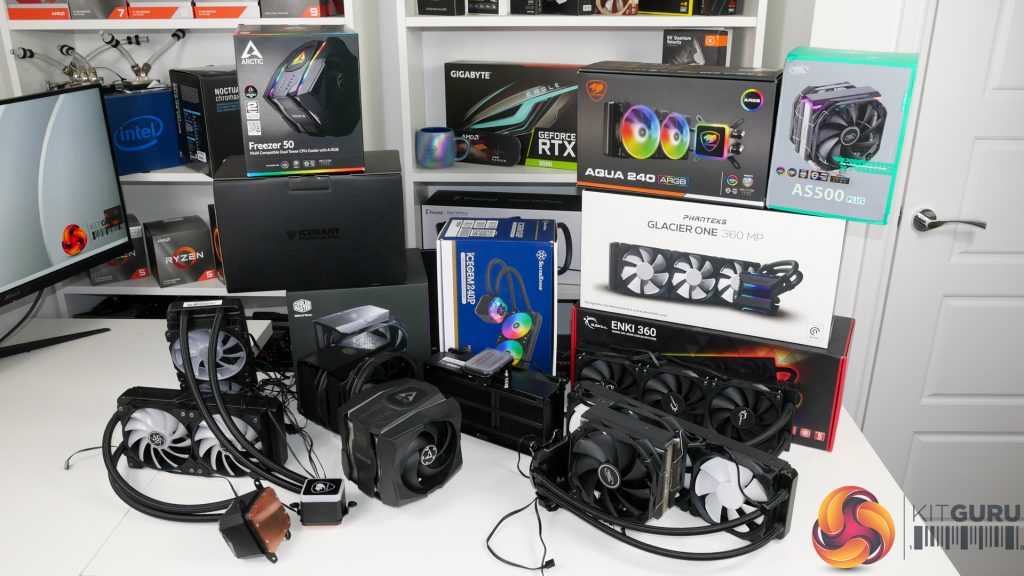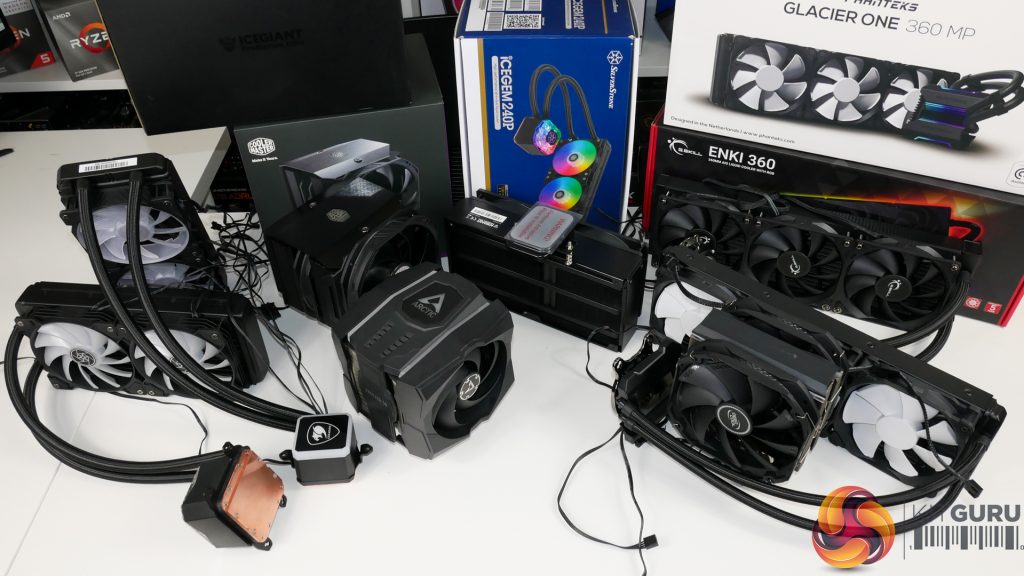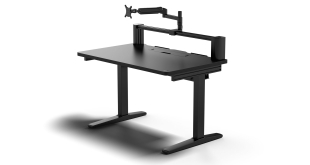As you have probably noted, the new Zen 3 chips offer excellent performance, power, and thermals. But they really do run hot and require high-end cooling when overclocked hard with the solid frequency gains. That is particularly true for the 16-core 5950X that will often be at home in heavily pushed overclocked systems, so effective cooling is absolutely critical.
As such, we thought it would be good to examine how a variety of coolers that we have in for testing perform when given the tough task of cooling the Ryzen 9 5950X in a variety of operating configurations.
Video Timestamps
00:00 Start
00:15 Introduction
01:13 A closer look at the coolers
01:34 DeepCool AS500 Plus
03:16 Arctic Freezer 50
05:53 Cooler Master MA624 Stealth
07:36 Cougar Aqua 240 ARGB
09:20 Silverstone IceGem 240P
11:17 G.SKILL Enki 360 AIO
13:35 Phanteks Glacier One 360 MP
15:17 IceGiant ProSiphon Elite
17:23 Test System Specifications
18:40 Noise Performance Test Results
19:51 Overclocked CPU Temperature Results
24:47 40dBA testing
28:26 Motherboard VRM Temperatures
29:32 Full fan speed PBO + Stock test results
31:40 Closing Thoughts
We have a variety of CPU coolers on test. This selection includes mid-sized and dual-tower air coolers, 240mm and 360mm AIOs, and the unique IceGiant ProSiphon Elite with its thermosiphon technology. Let’s take a closer look at the individual coolers.
DeepCool AS500 Plus
The DeepCool AS500 Plus is a single-tower air cooler that looks moderately sized upon initial examination but the heft of the overall cooler is evident once you feel its 1kg net weight. Two DeepCool TF140S PWM fans are used in push-pull configuration; these 140mm, fluid dynamic bearing, non-LED fans spin at 500-1200 RPM, giving them a decent range of speed operations.
A nickel-plated copper base feeds into five 6mm heatpipes. The heatpipes are mounted in a U-type configuration through the fairly densely packed aluminium fin array. One of the key features that DeepCool highlights is the AS500 Plus cooler’s slim overall profile that makes it ideal for use with tall memory modules.
A strip of A-RGB LED lighting is mounted around the black plastic shroud atop the fin stack. The LED lighting is controlled via the usual motherboard methods or via a bundled in-line controller. Worth noting is that the shroud marks quickly, as shown by our remnant grey thermal paste that cannot be cleaned off easily.
Priced at £64.99 nominally in the UK, but currently £49.99 on Scan, this is a very affordable cooler.
Overall installation for the DeepCool AS500 Plus is very straightforward and swift. This is aided by DeepCool’s clear instructions.
Four posts screw directly into the reference AMD backplate. This first step is easy whether the motherboard is on a table or whether it is installed inside the chassis. Two brackets then screw on top of the pillars and are tightened in position. The heatsink is mounted with both fans removed in order to access the spring-loaded retention screws. Both fans are then clipped onto the heatsink at the user-defined height level.
To summarise, DeepCool uses a quick, easy, and effective installation method. Plus, the RAM slots are fully accessible on our test motherboard even with the cooler installed – a nice bonus.
Arctic Freezer 50
The Arctic Freezer 50 is a dual-tower, dual-fan air cooler that weighs in at a hefty 1.2kg and is priced around £60 in the UK. Much of the external body is covered by black plastic shrouds, including the two fans. The top shroud area houses the 13 A-RGB LEDs which includes the Arctic logo and the LED light bars.
The six 6mm heatpipes interact with a CPU heatspreader via the direct touch method that we often see with cheaper, lower-end CPU coolers, albeit with some benefits. It will be interesting to see how the small Heatpipe Direct Touch base handles the concentrated, heavy thermal load of the overclocked Zen 3 16-core.
The two fans are from Arctic’s higher-end P-series range and are clearly optimised for high-pressure performance as indicated by the blade sweep. The front 120mm unit is rated at 200-1800 RPM. The centre 140mm fan is rated at 200-1700 RPM. Both fans clearly offer a good range of speed operation.
Arctic advertises RAM clearance of around 37.5mm as one of the Freezer 50’s strengths. This is misleading as 37.5mm is not particularly tall for RGB memory modules. Worse still is the inability to mount the front fan at a different height level like we see on competing coolers. As far as RAM clearance and flexibility goes, the Arctic Freezer 50 scores badly, despite the misplaced marketing claims.
Installation of the Freezer 50 is straightforward from the heatsink perspective. Four posts screw down onto the AM4 backplate and then two metal retention bars are screwed on top of the spacer posts. With the central fan removed, the cooler is screwed onto the retention bars.
Now comes the overly tricky part – securing the central fan in position. This is needlessly difficult as the fan slides in place but then needs to be clipped by the left and right shroud sections on the bottom of the heatsink. The plastic pieces have to be bent out of position and then secured and this feels a little scary on times due to risk of snapping any plastic.
Notably, this method is very difficult if installing the cooler inside of chassis as the proximity to top fans and motherboard VRM heatsink provides access woes. Once clipped into position, though, the mount is secure.
Overall, a reasonably straightforward installation process, but the attachment method for the central fan could do with improvement.
Also worth noting is interference with those horizontal retention bars. Capacitors on our Gigabyte B550 Aorus Master test motherboard were actually touched by the retention bar, though the actual interference seemed to be minimal. This is something to bear in mind.
Cooler Master MasterAir MA624 Stealth
The Cooler Master MasterAir MA624 Stealth is a dual-fan, dual-tower air cooler that weighs in at 1.3kg. The all-black unit has an alluring aesthetic appearance that is void of RGB lighting or flashy colours, which will be refreshing to many buyers in 2021. I guess my only appearance criticism would be that the front 140mm fan positioning is a little awkward as it does not sit flush with the rest of the heatsink. But this is a common trade-off when increasing RAM clearance.
Six heatpipes exit the nickel-plated base and feed into the dual aluminium fin arrays. The two fans we would consider to be main are 140mm SickleFlow versions with 650-1400 RPM rated PWM speeds. At 1400 RPM top speed, Cooler Master looks to be gunning for low-noise operation. Cooler Master includes a third fan – a 120mm SickleFlow blower with 650-1800 RPM rated PWM speed. This is intended for use with over-sized RAM modules.
MSRP for the Cooler Master MasterAir MA624 Stealth is £99.99 in the UK with availability targeting the end of March.
Rather than using the conventional AM4 backplate, Cooler Master opts for its own custom backplate and 4 pins that push through and are then held in place. Two retention brackets are screwed onto four front-side pillars that hold the backplate in position.
The cooler in its single-fan mode is then placed onto the CPU and secured by tightening the two protruding top-side screws. This final parts of the heatsink installation is very good as the central fan does not need removal.
Overall, the MasterAir MA624 Stealth mounting system starts off a little fiddly with the custom AMD backplate but then improves drastically to the point of the excellent top-side screw tightening.
IceGiant ProSiphon Elite
The IceGiant ProSiphon Elite is a 240mm-width class air-type CPU cooler that weighs in at a whopping 1440g on its own or 2kg with the four Arctic P12 PWM 300-2300 RPM fans installed. The unit is a gravity-driven, two-phase cooling solution that leverages thermosiphon technology instead of conventional heatpipes.
Importantly, thermosiphon cooling technology is used to transfer heat away from the aluminium evaporator (baseplate/cold plate, if you like). The thermal energy boils the internal fluid, the vapour from which travels through the three condensers and dumps its heat off to the fin array, the vapour is then condensed back into liquid and is gravity-fed back down to the evaporator to complete the continuous cycle.
Effectively, IceGiant is gunning for liquid cooling levels of heat dissipation capacity by bypassing conventional heatpipes, whilst aiming to do so without the liquid cooling drawbacks such as points of failure. You need to pay attention to the supported mounting orientation, but this won’t be an issue for conventional users’ chassis usage.
RAM clearance is deceptively good at 48mm, though you will have to install modules before the cooler given its design. Impressively, the unit ships with a 10-year warranty which is market-leading for a cooler and a confidence-inspiring indication of quality and durability.
Pricing is around £170 in the UK as the IceGiant ProSiphon Elite is intended for particularly heavy cooling loads, such as 300W+ HEDT processors. It will be interesting to see how it handles the smaller heatspreader and lower thermal load of the 5950X.
Installation is straightforward. You position the four plastic spaces on top of the default AM4 backplate. The metal bracket is then orientated correctly and screwed into position. The two-fan equipped ProSiphon Elite is the dropped onto the CPU and screwed into place.
The final two front-side fans can be installed. This can be a little tricky inside a chassis but IceGiant includes an appropriately sized screwdriver.
Cougar Aqua 240 ARGB
The Cougar Aqua 240 ARGB uses a conventional 27mm-thick aluminium radiator with a 3200 RPM 12-volt DC SATA-powered pump unit and a copper cold plate. 400mm-long rubber tubing is used to carry the coolant fluid and Cougar spruces up the aesthetic appearance by adding black braided sleeving. The two 120mm, hydraulic bearing VA120 fans are rated for 600-2000 RPM operating speed with 4-pin PWM control.
RGB lighting is housed on the pump-block unit and the pair of fans. Cougar uses a proprietary RGB connection primarily, though the pump unit does feature a 3-pin A-RGB cable. Control for the RGB lighting is handled by a remote control which allows a user to easily adjust the more than 100 lighting effects without the need for software. And RGB sync through the motherboard is also supported if preferred.
Early pricing is currently a little over £100 on Amazon and our Cougar contact tells us that this is because of current high freight charges. Actual price is meant to be £89.99, but we do not know if this will be the reality any time soon.
Installation is fairly straightforward thanks to the use of the default AMD backplate and retention clips. Placing the hooks into the AMD retention clips and trying to lock them in position with the spring-loaded female thread is a little tricky and had me wishing for three hands. Other than that, the install is simple and rotational freedom at the pump-block and tubing interconnection point is very good and we did not notice significant resistance to our hand manipulation.
One area which is evidently annoying is the sheer quantity of cables that Cougar relies upon. This bundle seems oversized and needless and it does cause some cable management headaches, especially with three distinct cables exiting the pump-block unit.
If you want more details on the Cougar Aqua 240 non-ARGB version, you can search for James’ full review on the KitGuru YouTube channel and main website.
Silverstone IceGem 240P
The Silverstone IceGem 240P is a premium 240mm AIO liquid cooler that uses a 38mm-thick aluminium radiator to better equip it for higher TDP applications. This point is particularly true when factoring in the oversized 3000 RPM 3-pin DC powered pump unit and Threadripper dimension copper cold plate. Silverstone highlights compatibility with hefty HEDT chips as well as power-hungry mainstream parts including our 5950X.
It is worth noting that the physically large pump-block unit is 66mm tall and 76mm square. This means that interference with VRMs and heatsinks on mainstream platform motherboards will be rife. That’s especially true with the side-mounted tubing connections.
Aesthetics are strong in our opinion. The 600-2200 RPM 120mm PWM fans feature translucent white blades and smooth A-RGB lighting. And I like the diamond cut styling of the cover on the pump-block unit when lit up, though I know James was less fond.
RGB lighting is controlled via Silverstone’s daisy-chained proprietary connectors that require an adapter for motherboard 3-pin addressable header support. Or the lights can be powered by Silverstone’s own in-line adapter and 10-mode controller.
Pricing is around £120 on Scan, which is indicative of the high-TDP target audience.
Installation uses a proprietary backplate and screws, though this was easy to deal with as four plastic spacers on the front-side held it in place. The large pump-block unit is then positioned over the protruding mounting screws and locked into place by spring-loaded female thread screws. Overall, the installation is straightforward from an understanding perspective.
However, we found that the sheer dimensions and weight of the pump-block unit made it difficult to adjust into position and therefore limit the tubing and orientation flexibility. The overall design looks to be intended for front-chassis vertical mounting. But we prefer horizontal roof chassis mounting, hence our inflexibility experiences.
Thankfully, the side-mounted tubes just missed the VRM heatsink on both our Gigabyte and MSI B550 motherboards.
G.SKILL Enki 360 AIO
The Enki 360 AIO is a 360mm liquid cooler that represents G.SKILL’s first foray into the CPU cooling market. This 3x120mm unit features a conventional 27mm-thick aluminium radiator with a 5000RPM 4-pin powered pump unit and a convex copper cold plate.
G.SKILL highlights higher radiator density as one of the Enki’s key features. The horizontal radiator pipes are spaced approximately 6mm apart which is denser than the competing AIO coolers we are looking at in this test. To power air through this dense fin array are 3 120mm, 9-bladed fans that operate at up to 2100 RPM using a 4-pin PWM connector.
None of the fans feature any form of RGB lighting – that is reserved for the pump-block unit. A simple, braided 3-pin 5V RGB header allows for straightforward ARGB lighting control through motherboard software. Disappointingly, G.SKILL does not include any form of fan splitter. This is annoying for a triple-fan AIO cooler that needs 4 headers including the pump.
G.SKILL tells us that MSRP for the 360mm unit is $179.99 USD.
Installation of the Enki 360 was the most frustrating of all coolers on test in this piece. G.SKILL seems to add needless complexity for users with only two hands. 4 plastic spacers sit on the front side of the stock AM4 bracket. Two metal brackets are then screwed onto the spacers, which is an easy task with the motherboard on the desk, but tough when installed vertically in a chassis.
The pump-block unit then sits on the CPU and two screws are directed through its bracket to thread into the motherboard-mounted retention pieces. Annoyingly, though, G.SKILL opts for a metal washer, spring, and screw design rather than a straightforward spring-loaded screw. This makes it all more difficult as the small washer constantly moves about. Plus it looks very similar to the fan mount washers and is not segregated so it is easy to misidentify.
Once installed, the mount is secure. But the silver metal brackets are highly visible and they are not attractive. Plus, the G.SKILL logo means that the pump unit can only be installed in one orientation without looking silly.
Overall, this is not a great installation procedure and the orientation flexibility is limited due to the G.SKILL logo
Phanteks Glacier One 360MP
The Phanteks Glacier One 360 MP is a 360mm AIO system using the Asetek 7th Gen pump design technology and a conventional 27mm-thick aluminium radiator. A notable benefit of the 3600RPM pump is the 4-pin power connector that permits PWM speed control.
The key feature is the magnetically mounted pump cover with 14-LED D-RGB lighting system and tempered glass infinity mirror. The pump cover’s proprietary RGB connector is adapted into a 3-pin 5V RGB header but it can also be daisy-chained with other Phanteks RGB products.
The 120 MP fans feature 7 white blades for an aesthetically pleasing appearance but do not have any form of RGB lighting. Performance of the fans is 500-2200 RPM using a 4-pin PWM connector. Phanteks smartly pre-routes the short fan cables allowing them to be daisy-chained to one another. This is superb as it only requires one motherboard fan header (plus another for the pump) and it eases the cable management burden.
Pricing is around £155 from Overclockers UK. This is comparable to competing 360mm Asetek design solutions from the likes of NZXT and Fractal.
Installation is as straightforward as we would expect from an Asetek AIO. Four screw pillars are connected to the default AM4 backplate. The Asetek design pump-block unit is then sat over these pillars and hand-tightened using female threaded screws. The magnetic pump cover can then be snapped into position and the cables connected. Tubing flexibility is superb and this gives options with regards to mounting directions.
The pump cover is clearly large, so that’s something to bare in mind from an interference perspective. It does, however, look very good when lit up.
There are several perfectly valid ways to test CPU coolers. We are primarily focussing on the performance of each cooler at 100% fan speed and also when locked to 40dBA noise output. We will focus on cooling performance using a manual overclock and Precision Boost Overdrive, as well as some reference to stock numbers. We will also highlight VRM temperatures.
We decided to test using a chassis as we feel that this is most representative of real-world use cases. It does have some unwanted influences on the test data, as does open-air test bench testing. But we feel that this is a worthwhile trade-off for real-world chassis performance of the coolers.
Our chassis of choice is the Fractal Design Meshify 2 case that Leo reviewed and scored very highly. We like this chassis thanks to its high airflow optimisation and well-vented front and top panels.
The fan configuration is the three included Fractal Dynamic X2 GP-14 fans spinning at full 1000 RPM speed. In addition to the two 140mm front-mounted fans, and single 140mm rear exhaust, we added a be quiet! Pure Wings 2 1000 RPM 140mm fan as roof exhaust for air cooler testing. The aim here was to keep consistency with the airflow path of the liquid coolers which are always roof mounted.
CPU Cooling Test System:
- Processor: AMD Ryzen 9 5950X
- Overclocked Settings: 4.45GHz all-core @ 1.312V (UEFI), Medium LLC – around 1.3V delivered
- Motherboard: Gigabyte B550 Aorus Master
- Memory: 32GB (2x16GB) Corsair Vengeance LPX 3600MHz 16-18-18-36 DDR4 @ 1.35V
- Graphics Card: Gigabyte RTX 2060 Super 0dB Mode
- Chassis: Fractal Design Meshify 2
- Chassis Fans: 2x140mm 1000 RPM Fractal Front Intake, 1x140mm 1000 RPM Fractal Rear Exhaust, 1x140mm 1000 RPM be quiet! Pure Wings 2 Roof Exhaust (for air cooler testing)
- Power Supply: Seasonic Prime TX-1000
- OS SSD: Corsair MP600 NVMe M.2 SSD
- Operating System: Windows 10 Pro 64-bit
Comparison Coolers:
- DeepCool AS500 Plus – £64.99, 2x140mm 1200 RPM Fans
- Noctua NH-D15 – £80, 2x140mm 1500 RPM Fans
- Cooler Master MA624 Stealth – £99.99 MSRP, 2x140mm 1400 RPM Fans
- Arctic Freezer 50 – £59.99, 1x140mm 1700 RPM + 1x120mm 1800 RPM Fans
- Cougar Aqua 240 ARGB – £89.99-£99.99 MSRP, 2x120mm 2000 RPM Fans, 3200 RPM Pump
- Silverstone IceGem 240P – £119.99, 2x120mm 2200 RPM Fans, 3000 RPM Pump
- Phanteks Glacier One 360 MP – £154.99, 3x120mm 2200 RPM Fans, 3600 RPM Pump
- G.SKILL Enki 360 AIO – $179.99 MSRP, 3x120mm 2100 RPM Fans, 5000 RPM Pump
- IceGiant ProSiphon Elite – £169.99, 4x120mm 2300 RPM Fans
Testing Methodology:
- For testing, we use a 30-minute looped run of Cinebench R23 and record the steady-state CPU temperature at the end of the test. This ensures that the CPU has had ample time to warm up and reach steady state under all of the coolers.
- Ambient is maintained around 22-24 degrees Celsius. Where there is variation beyond this temperature range, we add in extra repeated tests to ensure consistency.
- We also test each cooler with at least two fresh installs (typically three) to mitigate the likelihood of a dodgy mount spoiling results.
Let’s start off with noise performance from each cooler at 100% fan speed.
This is important as it sets the precedence for which coolers we expect to deliver the higher levels of performance based on the faster and louder fans. Assuming that their performance is efficient in comparison to their noise output levels, that is.
The chassis fans are disabled, all case panels are on, and the sound meter is placed 12 inches from the side of the Fractal chassis’ glass side panel – roughly where a desk user will be sat.
Unsurprisingly, the air coolers tend to dominate the 100% fan speed noise chart thanks to their ability to run with lower speed fans.
The DeepCool and Cooler Master units fair particularly well, thanks in large to both coolers opting for modest speed 140mm fans. Noctua also falls into that category.
As we see the fan speed ramp up for the Arctic and IceGiant air coolers, we see a corresponding uptick in noise levels. With that said, the high-quality design of the four 2300 RPM fans of the IceGiant allow it to still outperform the AIO liquid coolers in terms of full speed noise. Perhaps the lack of a high RPM pump unit is helping here.
G.SKILL takes the place as the loudest cooler in this test. Realistically though, the 50dBA and above AIOs are loud to the point where you would certainly want to tune the fan speed away from 100% for general operation.
With the highest noise levels at 100% fan speed, there is an expectation from us for the corresponding thermal performance to deliver accordingly.
Our overclocked test is the main stress test and represents a very tough challenge for these CPU coolers. As we are locking the voltage and clock speed, the temperature figures are directly comparable between competing coolers.
We see package powers in the order of 220W for the CPU and wall power levels that exceed 300W for the system. There is a caveat whereby lesser performing coolers force the CPU to run at higher temperature levels. This, in turn, reduces the operating efficiency and dictates that the CPU draws more power. This increased power draw results in higher operating temperatures, thus further negatively affecting the thermal performance.
This small degree of thermal runaway – albeit very limited in system divergence terms – is important with our manually overclocked 5950X CPU. It perhaps seems unfairly weighted against the lesser performing CPU coolers. But it is the reality of real-world operation whereby higher performing CPU coolers can sometimes show disproportionately better temperature performance at the higher thermal load levels.
Note the use of delta temperature data in our charts and factor in your own ambient conditions for reference.
Given their high-airflow, loud fans, it is not all that surprising to see the AIO liquid coolers performing very well in this high heat load test.
The Asetek-design Phanteks 360mm unit tops our chart with an impressive performance result of around 80C actual load temperature. G.SKILL’s 360mm unit is a few degrees behind, but this is slightly disappointing given its higher noise output at 100% fan speed. The overall performance benefits of Asetek’s premium system design for Phanteks are a factor here.
That point with respect to G.SKILL is especially true when we see Silverstone’s thick 240mm solution practically match its performance level. Silverstone does a good job here, though do note that the installation orientation of the massive CPU block could have an influence depending upon your choice of CPU.
Next in the hierarchy is our first air cooler – the IceGiant ProSiphon Elite – which ties with the 240mm Cougar AIO. That’s a pretty good result for IceGiant given the inherent benefits of air cooling versus liquid (depending on your preference, of course). Though realistically, this low a thermal load is not really doing the IceGiant thermosiphon technology justice versus heatpipe air coolers. The budget Cougar AIO is also doing a stellar job at keeping the high-powered 5950X in the order of mid-80s operating temperatures.
The first result that really surprised us was the DeepCool AS500 Plus. With Noctua NH-D15 matching levels of performance, this single-tower, cost-effective air cooler with preferential noise levels is punching well above its weight. This looks to be an inherent benefit of the single tower cooler design versus the restrictions placed on dual tower coolers.
The way in which single tower coolers are able to have their heatpipes traverse the Ryzen CPU is preferential. This is because of the alignment with respect to the heat-producing core chiplets mounted beneath the heatspreader. Yes, the Ryzen heatspreader and the cooler’s solid base should alleviate this benefit. But the reality is that the ability to dump heat to multiple heatpipes directly through the base and with minimal resistance – as opposed to one or two that traverse the CCX location – is beneficial.
We saw very similar behaviour to this when analysing cooling performance on the nine-chiplet Ryzen Threadripper 3990X CPU, so definitely check out that piece for more details.
Finally, we finish off with the Cooler Master and Arctic dual-tower units. Undeniably, these two disappointed. The MA624 looks to be struggling due to its relatively low speed fans and less preferential heatpipe orientation given its dual-tower design. And the Artic Freezer 50 looks to have hit a point whereby the 5950X’s highly concentrated heat load is a little too much for the dual-tower oriented HDT base to deal with effectively.
The high running temperature of the chip also affected its efficiency under these coolers. That, in turn, forced them to deal with an extra 5-10W of package power compared to some of the other solutions, thus worsening their situation slightly. At 100C real running temperature on both of these coolers, we would certainly recommend reducing the overclock voltage and frequency for safer daily operation.
Thus far, we see trend of the AIO coolers performing well with the 5950X. This comes as little surprise given that AMD themselves has recommending liquid cooling for use with the 16-core beast. Plus, the ability of the copper blocks in the AIOs to deal with the concentrated heat load produced by the Ryzen chip’s localised CCXs is beneficial.
Evidently, though, there is an argument that the AIOs are simply forcing their way to the top of the chart with higher-speed and louder fan solutions. We will have to wait until our 40dBA testing to see how the situation changes.
We won’t put too much emphasis on PBO results, but we will spend some time to quickly analyse them using our full fan speed data.
With 90C the maximum target temperature for PBO, we are looking for the cooler that achieves the balance between lower temperature operation and higher PBO clock speeds. Higher clocks with lower temperatures are better. But one cooler may run at slightly higher temperatures than another, albeit with higher clock speeds, so look out for that.
In essence, this test is showing us how far the coolers can be pushed while keeping a sensible 90C maximum. Or whether there is more room for pushing clocks and power delivery beyond the PBO limits while still sticking to a 90C target.
The 360mm AIOs, yet again, steal the show here. This is thanks to their abilities to move the concentrated heat load away from the Ryzen CPU whilst also dissipating the energy across a large surface area with high-speed fans.
Cougar’s 240mm cooler does particularly well by beating out the package power tolerated and CPU clocks achieved versus the Silverstone 240mm. And the IceGiant ProSiphon Elite joins the DeepCool AS500 Plus at the front of the air-cooling pack with full speed fans. But IceGiant’s bigger unit is better thanks to its 400MHz higher operating clock. The ProSiphon Elite is realistically batting on 240mm AIO levels.
Noctua’s NH-D15 bounces back-and-forth on the 90C limit with a clock speed of around 4330MHz. While the Cooler Master and Arctic dual tower models are glued to the 90C limit and reduce the CPU package power and operating clock accordingly.
While the big AIOs still manage to win in this test, we do see gaps that are much narrower between AIO and air cooler performance. This implies that the more sensible heat load applied by the PBO mode does not stress the air coolers as hard as our manual overclock does.
It also emphasises that a better cooler can indeed deliver lower temperatures plus higher clock speeds, as shown by the 360mm AIOs. Even though the bumps in operating clocks are relatively small but certainly not to be dismissed.
We can quickly brush over the stock test results as the roughly 129W package power from our 5950X is not high enough to stress any of these coolers properly. Plus, the PB2 algorithm means that the temperature levels are all very similar as the clock speeds change dynamically.
Even with the PB2 shackles and low power output from the chip, we see all coolers at 100% fan speed hovering around 54-56C with clock speeds between 3870 and 3910MHz. Yes, these results do highlight that the big 360mm Phanteks AIO handles things better than the lower fan speed air coolers, for example. But the differences are pretty much insignificant – all coolers deliver satisfactory performance here.
Having assessed the coolers at full fan speed, we see clear separation between the AIO cooler performance with their high-speed, loud fans and the competing lower-speed fan air coolers. As such, we have a look at some test results with the noise levels locked to 40dBA on each CPU cooler.
This noise-normalised test is perhaps a little unfair towards AIO liquid coolers and air CPU coolers with dense fin arrays. Those designs need high pressure fans to penetrate the dense arrays and this usually comes in the form of high-speed and loud fans.
With that said, noise is noise when it comes to user tolerance, so the way in which a cooler is designed and optimised is not necessarily a concern to a user simply wanting low-noise, 40dBA-type operation.
Clearly, the AIO coolers with their high-speed fans typically have to sacrifice more of their fan speed to hit the 40dBA noise target. The IceGiant ProSiphon Elite also falls into this category with its four high-speed fans designed to penetrate the thick and dense fin array.
Higher fan speed percentage does means you sacrifice less performance to hit 40dBA. Whereas low fan speed percentage in our chart means you have higher headroom to ramp up the fans when required.
Which result is best is down to individual preference on whether you want headroom cooling availability or generally the most out of the cooling power that you paid for.
Let’s see how the demanding OC stress test thermal performance hierarchy changes with a 40dBA lock on the noise output.
Even with around 5 or 6 degrees added to their temperature results, the Phanteks and SKILL 360mm AIOs still top the chart. Phanteks’ Asetek design unit is still better, but the G.SKILL cooler keeps below the 90C level thus resulting in a good enough outcome.
Maintaining much of its fan speed thanks to an already efficient noise level, the DeepCool AS500 Plus is drastically outperforming its budget price point once again. With a heavily overclocked processor running temperature in the order of 90C, the AS500 Plus is clearly offering a superb balance between noise and cooling performance that even takes it toe-to-toe with 240mm AIO liquid coolers. Once again, this is largely thanks to the preferential base and heatpipe design for use with Ryzen, but DeepCool still deserves credit for delivering great numbers.
The 240mm AIO coolers and IceGiant ProSiphon Elite all perform very similarly with real temperature levels running at 90C or just above. While it is expensive, I have to give IceGiant a fair deal of credit here. The ProSiphon Elite is matching 240mm liquid coolers even when its particularly dense fin array is hampered by reduced fan speeds. Plus, I also think it’s reasonable to re-emphasise that this thermosiphon cooler is designed for significantly higher heat loads than the sub-250W figure that we are throwing at it.
Noctua’s NH-D15 was towards the lower of the pack with its fans reduced in speed. It does, however, manage to comfortably outperform the Cooler Master MA624 Stealth with its similar dual tower heatsink and heatpipe orientation design.
The MA624 has excellent low-noise fans to thank for its ability to complete this test. With minimal reduction in fan speed required to hit the 40dBA target, Cooler Master’s performance barely flinches and therefore still manages to come in just around the 100C level.
Arctic’s Freezer 50 requires too high a fan speed reduction in this test meaning that maintaining 100C or below was not achievable.
So once again, we see the thermal capacitance and ability to manage the high heat concentration of the Ryzen chip as notable factors for AIOs in our 40dBA test.
360mm AIO still rules this chart and Cougar’s budget 240mm AIO also deserves a shout-out. But preferential heatpipe orientation delivers the goods for DeepCool. And IceGiant still puts in a solid showing despite being hampered by low fan speeds and a thermal load that is less than ideal for its thermosiphon technology.
We highlight VRM temperatures when using each cooler on our Gigabyte B550 Aorus Master motherboard with the overclocked Ryzen 9 5950X. Do note that the results are heavily influenced by the specific layout of the Gigabyte B550 Aorus Master test motherboard with respect to top-side or rear IO-side VRM components. So your findings may vary if you have a different motherboard VRM layout and heatsink design.
Noctua’s NH-D15 performs particularly well here by keeping the VRM MOS sensor below 70°C in our overclocked testing even when reduced to 40dBA fan speed.
VRM cooling performance from the AIOs varies as it is heavily influenced by the precise roof mounting position for the 240mm units. The larger 360mm units spread across more of the chassis and therefore shift more air in the vicinity of our motherboard VRM heatsink.
Particularly when looking at the 40dBA testing, this is where the air coolers shine versus their AIO competitors. The air coolers manage to keep VRM temperatures in the order of low-70s (though Noctua beats that). While the roof-mounted AIOs generally hit mid-to-high 70s.
There we have it – some interesting results from a varied batch of CPU coolers tested with the tough Ryzen 9 5950X thermal load. Clearly, the thermal concentration applied by the 16-core chip’s dual Zen 3 CCXs pumping out localised heat is a significant factor when it comes to CPU cooler performance.
AIOs look to be optimised well for dealing with this task. While air coolers can also put in solid showings if they are of the type that works optimally with AMD’s chiplet layout.
We were particularly impressed by the DeepCool AS500 Plus. Its U-type heatpipe design that traverses the AMD chip in a preferential direction proved effective for delivering strong all-out performance and excellent 40dBA results. Plus, the cooler was easy to work with, gives plenty of RAM clearance, and ships at a reasonable £65.
The Cougar Aqua 240 ARGB also deserves mention as the budget-orientated unit performed well in our testing. Yes, a significant chunk of this model’s price tag is spent on flash RGB lighting. But there is good performance to boot, so perhaps that will appeal to many.
Of course, the 360mm AIOs proved to be the big hitters, and the Asetek-design Phanteks Glacier One 360 MP was particularly good. £155 is certainly not cheap for an AIO cooler. But the unit does ooze quality and the performance numbers perhaps backed up the price tag.
The IceGiant ProSiphon also deserves mention for battling against the AIO liquid coolers whilst maintaining the benefits of air cooling. Of course, the caveat is the high price tag of IceGiant’s cooler. But this 10-year warranty backed unit’s thermosiphon technology is better suited for larger heat loads from bigger chips such as Threadripper. Let us know if you want to see some content based around that.
DeepCool AS500 Plus
The DeepCool AS500 Plus is available for £64.99 from Amazon HERE.
Arctic Freezer 50
The Arctic Freezer 50 is available for £59.99 from Scan HERE.
Cooler Master MasterAir MA624 Stealth
The Cooler Master MasterAir MA624 Stealth is not yet available at the time of writing but has a £99.99 MSRP.
IceGiant ProSiphon Elite
The IceGiant ProSiphon Elite is available for £169.99 from Overclockers UK HERE.
Cougar Aqua 240 ARGB
The Cougar Aqua 240 ARGB is available for around £100 from Amazon HERE.
Silverstone IceGem 240P
The Silverstone IceGem 240P is available for £130.69 from Amazon HERE.
G.SKILL Enki 360 AIO
The G.SKILL Enki 360 AIO is not yet available at the time of writing but has a $179.99 MSRP.
Phanteks Glacier One 360MP
The Phanteks Glacier One 360MP is available for £139.99 (discounted from £154.99) from Overclockers UK HERE.
KitGuru says: We see interesting results when throwing these coolers at the demanding AMD Ryzen 9 5950X workload. Which CPU cooler would best suit your needs? Let us know in the comment section.
 KitGuru KitGuru.net – Tech News | Hardware News | Hardware Reviews | IOS | Mobile | Gaming | Graphics Cards
KitGuru KitGuru.net – Tech News | Hardware News | Hardware Reviews | IOS | Mobile | Gaming | Graphics Cards


